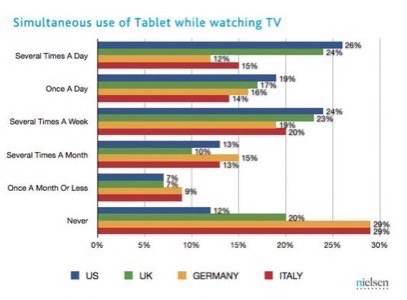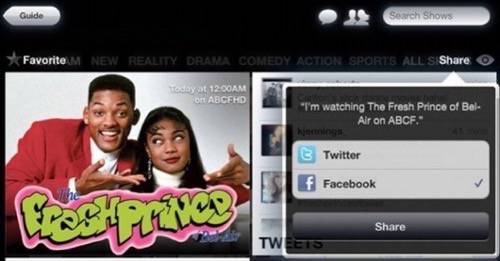As the tablet and smartphone markets grow, so too does the tendency for people to use these devices while watching TV. The trend has given rise to a crop of second screen apps that enable users to supplement the TV-watching experience with content from the Web and social media chatter.

The vast majority of tablet and smartphone owners use them while watching TV, according to the latest research. But who are these people? And how are they using their devices to enhance television?
What People Use Their Second Screens For
The most popular second screen activity actually has nothing to do with the TV content itself. For all the things one can do on their devices, it turns out that checking email is the most popular activity for couch-bound tablet and smartphone owners.
There are a few different types of second screen apps. Some are designed to help people find related content from various Web sources. This is something that is normally accomplished most easily via a Google or IMDB search, but apps like i.TV for the iPad make it considerably easier.
Smartphone and tablet apps are also increasingly used to do things like view schedules of TV programming, control DVRs and “check in” to shows and movies much like people check into real-world venues using Foursquare or Facebook. One of the leaders in the entertainment mobile check-in space is GetGlue, whose API is often used to build check-in functionality into other apps. They are joined at the top of this space by Miso.
“I think the check in may be limited to earlier adopters or a small subset, just like on any network,” says GetGlue COO Fraser Kelton. The more valuable types of engagement, he says, come after the check-in, when users comment on it and otherwise interact directly with one another.
Apps like this also play a key role in content discovery, Kelton notes. Once users are connected with friends and family via an app like GetGlue, they’re able to get a quick idea of what like-minded people are watching and tune in accordingly.

Who’s Using Second Screen Apps
Of Americans who own smartphones, 86% say they use their devices while watching TV at least once per month, according to Nielsen. For tablet owners, that percentage is slightly higher. About half of them use their tablets while watching TV on a daily basis.
The breakdown of users engaged in social media while watching TV skews toward white males, according to Nielsen. Men make up 55% of social TV participants, while they account for slightly less than half of Web users over all. Similarly, women are more active online generally than they are in the social TV arena.
It’s not just a bunch of teenagers or even college students who are chattering about TV on social media. Nearly 60% of those who do are between the ages of 25 and 49. By comparison, that age group makes up only 42% of the online population generally.
Social TV check-in app Miso has more than 300,000 users, which the company has relied on to build out its massive database of content. That user base is mostly in North America, and more than 60% of them are on iOS devices, according to Shay Fan, Miso’s head of marketing and communications.
“Our community has become extremely involved,” says Fan. “For example, our community members have added over 75,000 TV shows and movies and another 100,000 unique episodes to our database.”

Far From Mainstream, But Well on Its Way
This type of activity is growing, but it’s far from mainstream. Sure, a majority of tablet owners use their devices while watching TV, but tablet owners are still a minority – and even those who do pull out their tablets on the couch are mostly checking their email first.
The concept of “checking in” to a TV show is foreign to most people, although chatting about American Idol via social networks is something that comes a little more naturally. Twitter knows this and has embraced its role in social TV through formal partnerships with broadcasters.
It’s not just chatter, either. Research has shown a correlation between social buzz for a TV show and high ratings. That gives the TV studios and other industry players a real incentive to get involved in this space and help cultivate its growth. In an interesting shift for content providers, the social TV trend may bolster the number of viewers who tune in for the original broadcast, rather than catch their favorite show online the next day.
However this still-young space shakes out in the short-term, we have a hard time seeing the social TV and second screen trends not continuing, becoming a major force in the future.










